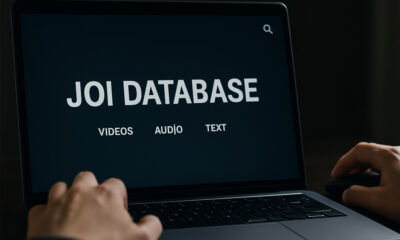Every organization depends on secure access to systems and data. Managing who enters those systems, what they see, and what they do is critical.
Identity and Access Management, or IAM, is the framework that makes this possible. It protects digital identities, controls access, and supports compliance in a growing threat landscape.
What Identity and Access Management Does
IAM manages the digital identities of users, devices, and systems. It defines who gets access to what information. The main goal is to ensure only authorized users gain entry to sensitive resources.
IAM systems verify users through login credentials, biometrics, or multi-factor authentication. Once verified, users receive access according to predefined permissions. These permissions determine what data they can view or modify.
In large organizations, this process reduces human error and improves security consistency. It also makes onboarding and offboarding employees faster and safer. With IAM, companies track every access request, creating transparency and accountability.
Core Components of IAM
IAM involves several components that work together to maintain security.
- Identity Management – Creates, stores, and manages user identities. Each user has a unique profile that defines access privileges.
- Access Management – Enforces permissions and verifies user credentials. This step ensures users access only the resources they are allowed to use.
- Authentication – Confirms user identity through passwords, tokens, or biometric data.
- Authorization – Determines access levels once a user is authenticated.
- Audit and Compliance – Tracks user activity to detect anomalies and meet regulations such as GDPR or HIPAA.
Each element supports the other. Together, they create a controlled environment that limits exposure to internal and external threats.
Why Identity and Access Management Matters
Cyber attacks often exploit weak or stolen credentials. IAM reduces these risks by enforcing strict access rules. Understanding what is identity and access management in cyber security helps organizations protect data from unauthorized use and data breaches.
Without IAM, systems face security gaps that attackers exploit. For instance, if former employees retain access to company files, sensitive data can leak. With IAM, administrators can revoke permissions instantly. This lowers the chance of insider threats and data misuse.
IAM also supports compliance. Industries that handle personal or financial information must follow privacy regulations. IAM helps maintain those standards by controlling and documenting access. It simplifies audits and reduces the risk of fines.
In addition, IAM improves user experience. Employees access the resources they need through single sign-on systems. This reduces password fatigue and increases productivity. Customers also benefit when companies protect their data while providing smooth access.
Common IAM Technologies
Several technologies support IAM implementation.
- Single Sign-On (SSO): Lets users log in once to access multiple systems.
- Multi-Factor Authentication (MFA): Adds extra verification steps beyond passwords.
- Privileged Access Management (PAM): Controls access for high-level users like administrators.
- Role-Based Access Control (RBAC): Assigns permissions based on job roles to reduce risk.
- Identity Federation: Allows secure access across different organizations or platforms.
Each tool addresses specific needs. Choosing the right combination depends on the organization’s size, industry, and threat exposure.
Challenges of IAM
Despite its benefits, IAM faces challenges. Integrating it with legacy systems can be complex. Organizations must update outdated infrastructure to align with modern IAM platforms. Another challenge is balancing security with usability. Strong authentication methods protect data but can frustrate users if poorly implemented.
Human error also poses risk. Even with IAM in place, users can mishandle credentials or ignore security protocols. Regular training helps reduce these mistakes.
Lastly, maintaining IAM systems requires ongoing effort. Access rights must evolve with changing roles, projects, and regulations. Neglecting updates leads to vulnerabilities and compliance issues.
Best Practices for Effective IAM
- Use Multi-Factor Authentication to add a security layer beyond passwords.
- Apply the Principle of Least Privilege to give users only the access they need.
- Monitor Access Logs to detect suspicious behavior.
- Automate Provisioning and Deprovisioning to prevent lingering access.
- Review Permissions Regularly to keep access lists current.
- Educate Employees about security policies and responsible data use.
Conclusion
Identity and Access Management protects the foundation of digital security. It controls who enters your systems and what they can do. Strong IAM practices prevent breaches, strengthen compliance, and improve operational efficiency.
Every organization that handles digital data needs a structured IAM strategy. It is not only about managing access but also about maintaining trust, accountability, and resilience in a connected world.

 Entertainment3 months ago
Entertainment3 months ago
 Entertainment3 months ago
Entertainment3 months ago
 Celebrity2 months ago
Celebrity2 months ago
 Celebrity1 month ago
Celebrity1 month ago
















